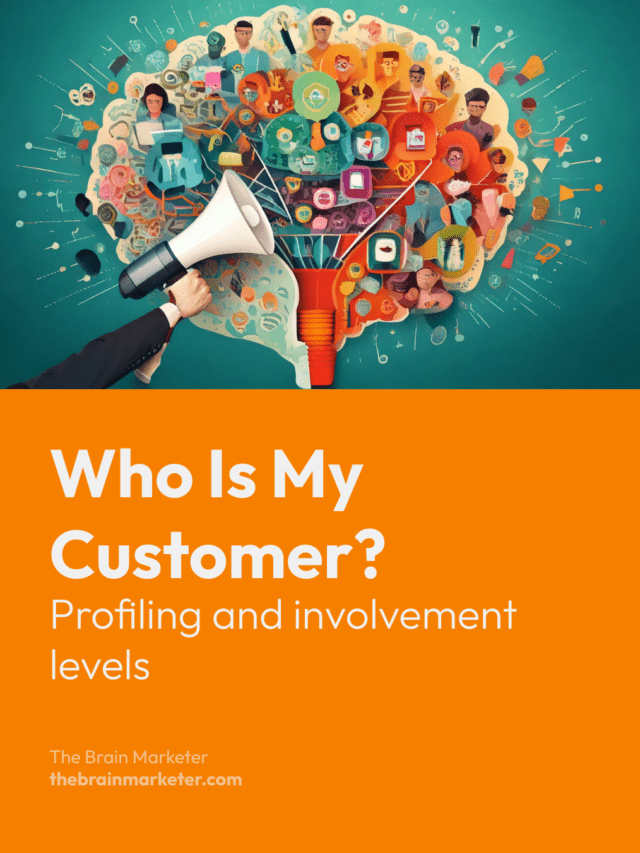Introduction
Knowing your customer is the key to building a marketing strategy that captures attention and turns prospects into loyal clients. But how do you really understand your audience? To do this, it’s essential to define the sociodemographic profile, understand consumption habits, needs and expectations, motivations, and potential barriers. This article will help you better understand your customers and determine their level of involvement with your product or service so that you can adjust your marketing message accordingly.
🎙️ Unpack the Topic with this Podcast
Customer Sociodemographic Profile
To truly understand who your customer is, start by defining their sociodemographic profile. These criteria allow you to segment your audience and tailor your communication strategy based on specific characteristics:
- Gender: Preferences can differ by gender, both in terms of messaging and product design.
- Age: Needs, expectations, and purchasing behaviors change significantly depending on age (e.g., Generation Y, young professionals, Zoomers).
- Income: Income level directly influences perceived value and price sensitivity.
- Habitat: Where the consumer lives (rural, urban, suburban) can influence their consumption habits.
- Other Criteria: Education level, household composition, and lifestyle are also important factors to consider when targeting your message.
Consumption Habits and Needs
Beyond sociodemographic criteria, it’s important to understand your customers’ consumption habits with respect to the product or service category you wish to promote. This includes:
- Frequency of Purchase: Is it a product bought regularly or occasionally?
- Consumption Moment: Is the product used for a particular occasion (holidays, events, specific times of day)?
- Preferred Distribution Channel: Where does your customer buy your products? Online, in-store, or on specific marketplaces?
These habits influence how you should structure your offer and marketing message to maximize impact.
Needs, Expectations, and Purchase Motivations
- Needs and Expectations: What problems can your product or service solve for your customer? A need can be functional (efficiency, time-saving) or emotional (recognition, belonging).
- Purchase Motivations: Understanding a customer’s motivation is crucial to building a suitable pitch. Some consumers buy for pleasure, others for comfort, and some to conform to social status. For example, a well-informed buyer visiting a car dealership, who knows the model better than the salesperson, does not want to hear about technical features: they expect to be seduced on an emotional level, to feel the pride and excitement linked to acquiring that vehicle.
Potential Purchase Barriers
Barriers to purchasing are just as important to identify to overcome the obstacles that prevent the consumer from acting. These barriers may include:
- Price: Is the product perceived as too expensive compared to its value?
- Perceived Risk: Does the consumer fear making the wrong choice (financial risk, quality)?
- Complexity: Does the product seem difficult to use or understand?
Overcoming these barriers requires adjusting your message to reassure the customer, for instance by highlighting testimonials, guarantees, or free trials.
Customer Involvement Level
The customer’s level of involvement is a key criterion for adapting the marketing strategy. It can be either high or low, and each type requires a different approach.
Highly Involved Consumer
A highly involved consumer places great importance on the purchase and is very attentive to details:
- Importance of Purchase: This type of consumer thinks carefully before making a choice, as the purchase is significant to them.
- Differences Between Brands: They evaluate differences between brands carefully, looking to maximize benefits.
- Interest in Advertising: They are interested in advertisements and information about the product or service because they want to make an informed choice.
- Attentive to Word of Mouth: They are influenced by the opinions and experiences of other consumers, and they also share their own views.
- Potential Brand Ambassador: A highly involved consumer often becomes an informant and advisor for the brand, influencing other consumers with their recommendations.
Marketing Strategy: For highly involved consumers, it’s essential to provide detailed information, social proof (testimonials, case studies), and rational arguments that justify their choice. Educational content (such as buying guides) and enriching experiences are key elements for this profile.
Lowly Involved Consumer
A lowly involved consumer is not particularly interested in the purchase and simply wants to meet their needs without much thought:
- Little Importance to Purchase: The purchase is a formality, without significant importance.
- Little Brand Differentiation: This type of consumer does not perceive much difference between brands, unless a specific experience influences them.
- No Interest in Advertising: They don’t pay attention to traditional marketing messages.
- Evaluation by Trial: Trying a brand is often their main evaluation criterion.
- No Interest in Social Approval: Unlike highly involved consumers, they are not motivated by others’ opinions.
Marketing Strategy: To reach lowly involved consumers, it’s important to focus on simplicity and accessibility. Packaging must be attractive, and messages must be concise. Promotions, samples, or demonstrations can be helpful in encouraging trials and driving conversion.
Conclusion
Knowing your customer profile and their level of involvement is essential to developing effective and relevant marketing strategies. By segmenting your audience based on sociodemographic criteria, consumption habits, motivations, and barriers, you can build tailored messages that resonate with each type of consumer. Adapting your message to your customers’ level of involvement will help you maximize your impact, whether by providing detailed information to engaged consumers or by encouraging trials for those with low involvement.

Vincent Heimann is a marketing project manager and neuromarketing enthusiast. He founded The Brain Marketer to bridge neuroscience and marketing through accessible, science-based content. With over 10 years of experience in digital strategy, UX/UI and communication, he shares practical insights to help brands connect with the human brain — ethically and effectively

